Kedves Olvasóink!
Havonta frissülő könyvajánló rovatunkkal a könyvtárunkba frissen érkezett kiadványokra szeretnénk felhívni a figyelmüket. A könyvek kölcsönözhetők, hozzáférhetőségükről az online katalógusban informálódhatnak, további felvilágosítást a könyvtárosoktól kérhetnek.
A könyvtár nyitva tartásáról és a kölcsönzés feltételeiről a könyvtár oldalán tájékozódhatnak.
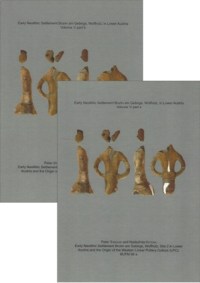
Peter Stadler, Nadezhda Sergeevna Kotova: Early Neolithic Settlement Brunn am Gebirge, Wolfholz,in Lower Austria. Volume 1 : part a & b
Langenweissbach: Beier und Beran 2019
Sorozat: Beiträge zur Ur- und Frühgeschichte Mitteleuropas 88.1
Raktári jelzet: R-40.368/2021
Nyelv: Angol
On Saturday, September 2nd, 1989, when I cycled from Vienna to pay a visit to my parents in Mödling, I had no idea that this trip would be decisive for my future life for over thirty years. In the black excavation heaps created by road construction, I discovered sherds of the earliest Linear Pottery Cultureon my route in the area of Brunn am Gebirge, Wolfholz; we named the area later site 1. A short time afterwards, we discovered sites 2 and 3 a few hundred meters to the south, making this the first time that the previously unrecognized mega-site of Brunn came under the spotlight of prehistoric research. From 2007 onward, Nadezhda Kotova assisted me with the evaluation of ceramics, which had accumulated from 1989 – 2005 during numerous excavation campaigns. I owe her many hanks in regards to us finally finishing this opus magnum for the Brunn 2 site. The special thing about Brunn 2 is the fact that here the Linearbandkeramik can be observed in a place at its origin during the Formative phase. Nadezhda once asked me from where I believed that the Brunn settlers had come. The cultures involved are the Early Neolithics, Star?evo and Körös and the Linear Pottery Culture (LPC), in German Linearbandkeramik (LBK). I pointed spontaneously to the southeast, thinking first of southern Hungary, Serbia and Croatia. In fact, as we have shown, there was a high percentage of the Star?evo culture that contributed to Brunn 2. But during the investigation of the musical instruments, the amphorae, the idols and other vessel shapes, our eyes turned even further to the southeast, as far as western Bulgaria and even the northwest Anatolian Lake District around Hac?lar. Brunn 2 is the oldest site that we present completely in volumes 1a, 1b and 1c, as far as ceramics are concerned. Further volumes on ceramics are planned in the chronological order of sites 3, 4, and 1 together with 6. Afterwards, a book about 3D reconstructions of the houses of all sites in the form of a PhD thesis and another about lithic materials are planned. So much still remains to be done.
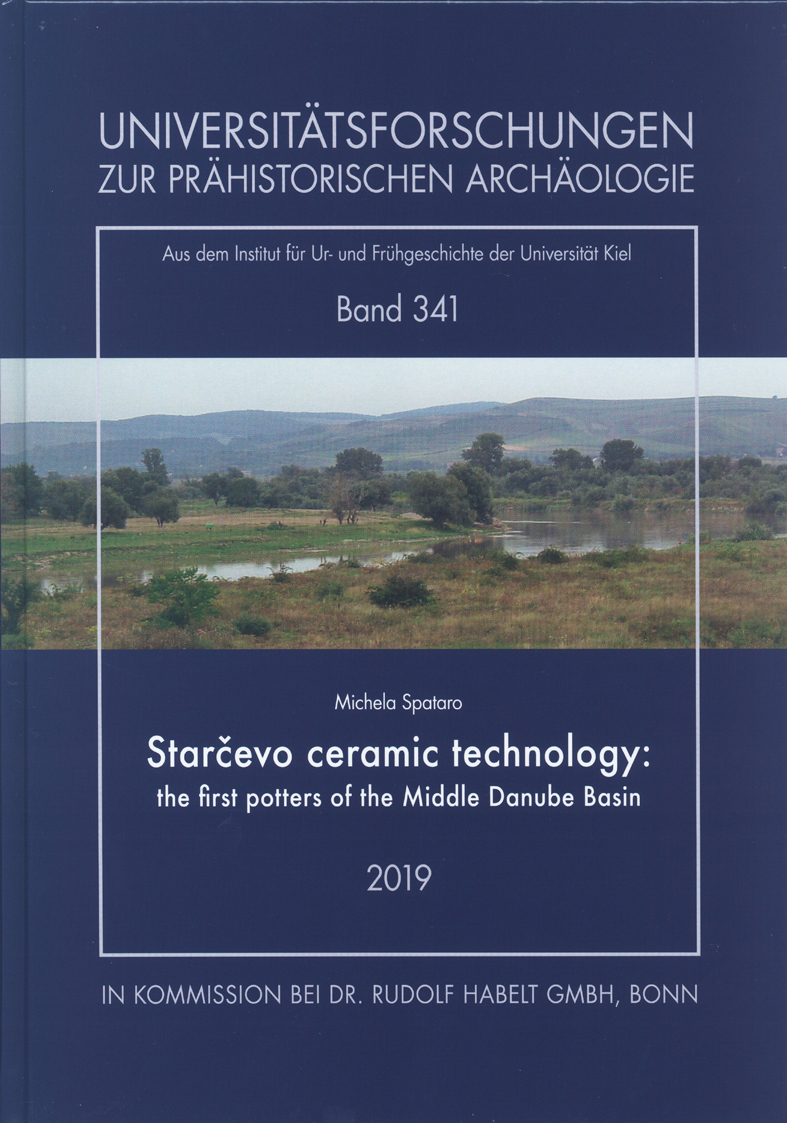
Michela Parato: Starčevo ceramic technology : the first potters of the Middle Danube Basin
Bonn: Dr. Rudolf Habelt 2019
Sorozat: Universitätsforschungen zur prähistorischen Archäologie 341
Raktári jelzet: R-40.369/2021
Nyelv: Angol
Early Neolithic Starčevo groups made the first ceramics and fired clay cult objects in the Middle Danube basin during the 6th millennium cal BC. These groups were also the first farmers in the region. This study of Starčevo everyday pottery, ceramic figurines and four-legged vessels from Slavonia, Serbia and Romania shows that the same pottery chaîne opératoire was used throughout this region, at sites located in different geological settings, where potters could have used a wider range of raw materials. Starčevo potters were not specialists, but some later Starčevo ceramics were more sophisticated, particularly in decoration techniques. The similarity of pottery technology throughout the Middle Danube basin shows the ongoing connectedness and intermixing of Starčevo communities, while the use of one chaîne opératoire for almost a millennium, and the lack of technological exchange with contemporaneous Adriatic Impressed Ware pottery, reveals a conservative society, in which intergenerational transmission of technical skills and a strong network may have helped to maintain social stability over time.
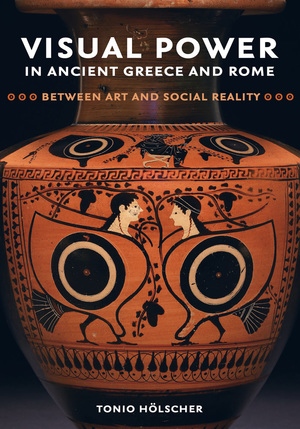
Tonio Hölscher:Visual Power in Ancient Greece and Rome: Between Art and Social Reality
Oakland: University of California Press, 2018
Sorozat: Sather Classical Lectures 73
Raktári jelzet: R-40.373/2021
Nyelv: Angol
Visual culture was an essential part of ancient social, religious, and political life. Appearance and experience of beings and things was of paramount importance. In Visual Power in Ancient Greece and Rome, Tonio Hölscher explores the fundamental phenomena of Greek and Roman visual culture and their enormous impact on the ancient world, considering memory over time, personal appearance, conceptualization and representation of reality, and significant decoration as fundamental categories of art as well as of social practice. With an emphasis on public spaces such as sanctuaries, agora and forum, Hölscher investigates the ways in which these spaces were used, viewed, and experienced in religious rituals, political manifestations, and social interaction.
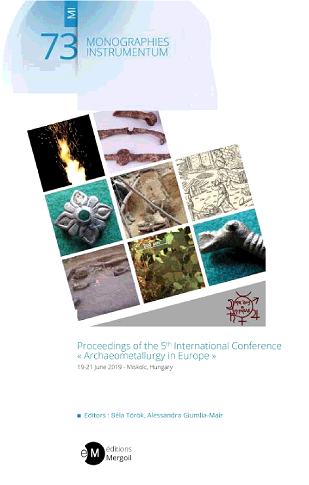
A. Giumlia-Mair, B. Török (eds): Proceedings of the 5th International Conference " Archaeometallurgy in Europe ": 19-21 June 2019 - Miskolc, Hungary
Drémil-Lafage: Mergoil, 2021
Raktári jelzet: R-40.370/2021
Nyelv: Angol
This volume collects a number of papers on various archaeometallurgical topics, presented at the 5th International Conference « Archaeometallurgy in Europe » held at the University of Miskolc in 2019, 19-21 June.
Ancient copper metallurgy
- The metallurgical site of “Le Planet” (France): presentation and characterization of an original Neolithic metallurgy (K. Costa, E. Dransart, M. Shah, M. Maillé)
- Multivariate statistical study of lead isotopic data: proposal of a protocol for provenance determination (C. Tomczyk, K. Costa, B. Desachy, P. Brun, C. Petit)
- Synthetic study of the emergence of primary copper sulphide metallurgy (C. Tomczyk, P. Brun, C. Petit)
- The Application of Computer Simulation on Reverse Engineering of Artefacts (D. Molnar, P. Barkoczy, J. G. Tarbay, B. Török)
- Analytical investigations on plate slags from the late Urnfield Period copper mining settlement at Prigglitz-Gasteil (Lower Austria) (R. Haubner, S. Strobl, P. Trebsche)
- Late Bronze Age new statistical and archaeometallurgical artefacts surveys from France and Switzerland (950 to 800 BCE) (K. Costa, P. Brun, B. Mille)
- Development of metallurgical production in N-Eurasia and Europe and its socio-economic background (S. Grigoriev)
- The Emergence and Spread of Tin Bronze Alloying in Prehistoric Iran – The LBA Metallurgy in Sagzabad, Northern Iran (O. Oudbashi, M. Mehofer, S. Bahadori, A. Aliyari, H. Tala'i)
Copper based alloys
- Life Cycles of Metals in the Iron Age (4th – 1 st Century BC). Sourcing and Recycling of Copper Based Alloys (A. Danielisová, D. Bursák, L. Strnad, J. Trubac, M. Fikrle)
- The Kuwano Sword from the Fetish Shrine at Knossos (A. Giumlia-Mair, A. Kanta)
- «...nunc et in Bergomatium agro...» The zinc mining area in the DossenaGorno District near Bergamo as a possible source for Roman Brass (A. Maass, A. Celauro, S. Merkel)
- Non-ferrous metals in Roman (Late Republican and Early Imperial) military equipment from the River Ljubljanica, central Slovenia (J. Istenic, Z. Smit)
- Analyses of Ornaments on Roman Carriage and Horse Equipment from Eastern Serbia (M. M. Stojanovic, T. Tripkovic, D. Ratkovic)
- Copper-based alloy reliquary crosses with niello decoration from North-Eastern Rus': the first studies of the niello composition and the technique of application (I. Zaytseva, E. Greshnikov, E. Kovalenko, M. Murashev, K. Podurets)
- Copper Incense Burner and Bronze Mirrors of the Toretsky Urban Settlement (Bolumer Town) in Tatarstan (S. Valiulina)
Precious metals
- Middle Bronze Age Gold Sheet from Albareto (Parma), Italy (A. Giumlia-Mair, R. Conversi, M. P. Riccardi)
- New Evidence for Sophisticated Goldworking Techniques from Middle Minoan Crete (A. R. Giumlia-Mair, S. C. Ferrence, J. D. Muhly, P. P. Betancourt)
- Celtic gold torcs - An interdisciplinary and diachronic perspective (B. Armbruster et al.)
- Experimental and analytical study of gold parting processes used in ancient times (A. Celauro, D. Loepp, D. Ferro, T. De Caro)
- New investigations made on the 5th century AD horse harnesses from Untersiebenbrunn (Austria) (R. A. Piros, V. Mozgai, B. Bajnóczi)
- Early medieval “gombiky” from Mikulcice: archaeological context, function, occurrence, typology, construction, and characterization of materials and manufacturing processes (S. Krupicková, E. Ottenwelter, L. Polácek, L. Robbiola)
- The manufacture of replicas of early medieval “gombiky” from Mikulcice, Great Moravia, 9th century AD. (L. Barcáková)
Iron
- An insight into iron-making in the Basque Country (Northern Spain): Technical traditions from the First Millennium BC to the later Middle Ages (J. F. Pérez, D. Larreina-García, I. Etxezarraga, X. Alberdi)
- Early Iron Technology in the Circumpolar North (C. Bennerhag, L. Grandin, O. Stilborg, E. Hjärthner-Holdar, K. Söderholm)
- Late Roman smithing workshops from Cascina Castelletto, Pioltello (Milan, Northern Italy) (C. Cucini, S. De Francesco, M. P. Riccardi, M. Tizzoni)
- Metallographic examination of Hungarian Sabres from the 10th Century – first archaeometallurgical approach in the Carpathian Basin by a case study (M. Haramza, B. Török)
- Metallographic examination of nine medieval knives from Sepkovcica, Kobilic and Okuje (Republic of Croatia) (A. Thiele, J. Hosek, N. Antonic, M. Haramza)
- The Problem of Studying Sources of Raw Materials for Medieval Craft Centers: Results from the Site of Istye 2 (Russia) (V. I. Zavyalov, N. N. Terekhova)
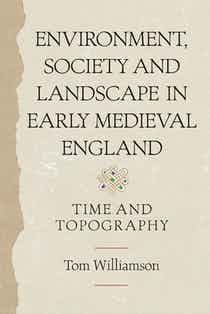
Tom Williamson: Environment, Society and Landscape in Early Medieval England
Woodbridge: The Boydell Press 2015
Sorozat: Anglo-Saxon Studies
Raktári jelzet: R-40.375/2021
Nyelv: Angol
The Anglo-Saxon period was crucial in the development of England's character: its language, and much of its landscape and culture, were forged in the period between the fifth and the eleventh centuries. Historians and archaeologists have long been fascinated by its regional variations, by the way in which different parts of the country displayed marked differences in social structures, settlement patterns, and field systems. In this controversial and wide-ranging study, the author argues that such differences were largely a consequence of environmental factors: of the influence of climate, soils and hydrology, and of the patterns of contact and communication engendered by natural topography. He also suggests that such environmental influences have been neglected over recent decades by generations of scholars who are embedded in an urban culture and largely divorced from the natural world; and that an appreciation of the fundamental role of physical geography in shaping human affairs can throw much new light on a number of important debates about early medieval society.
The book will be essential reading for all those interestedin the character of the Anglo-Saxon and Scandinavian settlements, in early medieval social and territorial organization, and in the origins of the England's medieval landscapes.
Tom Williamson is Professor of LandscapeHistory, University of East Anglia; he has written widely on landscape archaeology, agricultural history, and the history of landscape design.
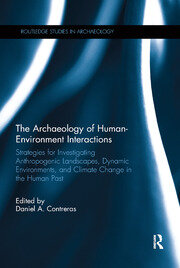
Daniel Contreras (Ed.): The Archaeology of Human-Environment Interactions: Strategies for Investigating Anthropogenic Landscapes, Dynamic Environments, and Climate Change in the Human Past
London: Routledge 2019
Sorozat: Routledge Studies in Archaeology
Raktári jelzet: Feldolgozás alatt
Nyelv: Angol
The impacts of climate change on human societies, and the roles those societies themselves play in altering their environments, appear in headlines more and more as concern over modern global climate change intensifies. Increasingly, archaeologists and paleoenvironmental scientists are looking to evidence from the human past to shed light on the processes which link environmental and cultural change. Establishing clear contemporaneity and correlation, and then moving beyond correlation to causation, remains as much a theoretical task as a methodological one.
This book addresses this challenge by exploring new approaches to human-environment dynamics and confronting the key task of constructing arguments that can link the two in concrete and detailed ways. The contributors include researchers working in a wide variety of regions and time periods, including Mesoamerica, Mongolia, East Africa, the Amazon Basin, and the Island Pacific, among others. Using methodological vignettes from their own research, the contributors explore diverse approaches to human-environment dynamics, illustrating the manifold nature of the subject and suggesting a wide variety of strategies for approaching it. This book will be of interest to researchers and scholars in Archaeology, Paleoenvironmental Science, Ecology, and Geology.
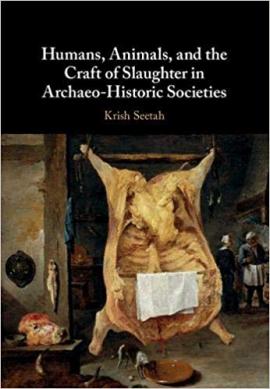
Krish Seetah: Humans, Animals, and the Craft of Slaughter in Archaeo-Historic Societies
Cambridge: Cambridge University Press 2019
Raktári jelzet: R-40.374/2021
Nyelv: Angol
In this book, Krish Seetah uses butchery as a point of departure for exploring the changing historical relationships between animal utility, symbolism, and meat consumption. Seetah brings together several bodies of literature - on meat, cut marks, craftspeople, and the role of craft in production - that have heretofore been considered in isolation from one another. Focusing on the activity inherent in butcher, he describes the history of knowledge that typifies the craft. He also provides anthropological and archaeological case studies which showcase examples of butchery practices in varied contexts that are seldom identified with zooarchaeological research. Situating the relationship between practice, practitioner, material and commodity, this imaginative study offers new insights into food production, consumption, and the craft of cuisine.
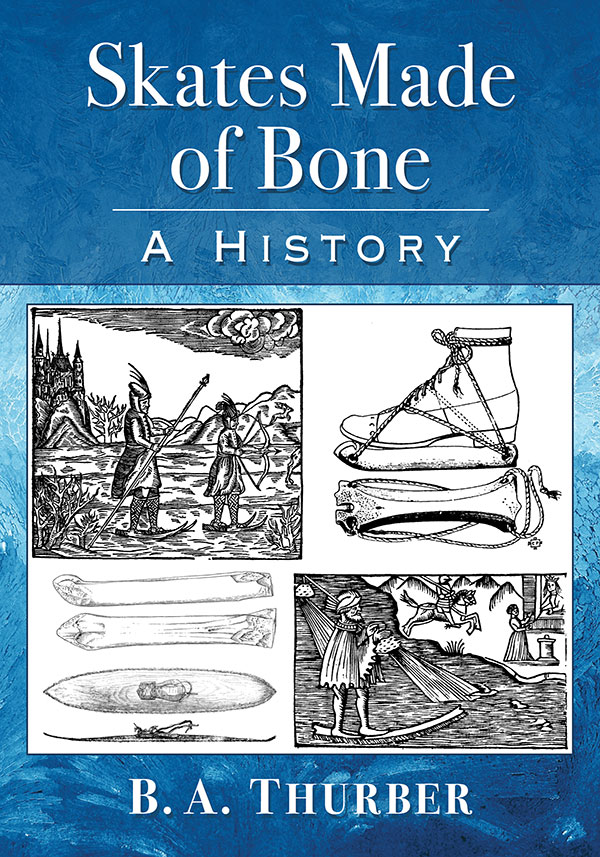
B.A. Thurber: Skates Made of Bone: A History
Jefferson NC: McFarland 2020
Raktári jelzet: R-40.377/2021
Nyelv: Angol
Ice skates made from animal bones were used in Europe for millennia before metal-bladed skates were invented. Archaeological sites have yielded thousands of examples, some of them dating to the Bronze Age. They are often mentioned in popular books on the Vikings and sometimes appear in children's literature. Even after metal skates became the norm, people in rural areas continued to use bone skates into the early 1970s. Today, bone skates help scientists and re-enactors understand migrations and interactions among ancient peoples. This book explains how to make and use them and chronicles their history, from their likely invention in the Eurasian steppes to their disappearance in the modern era.




